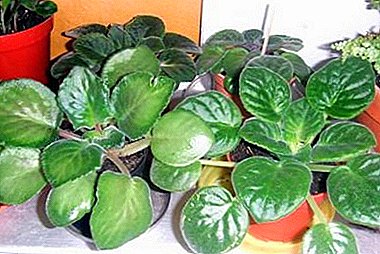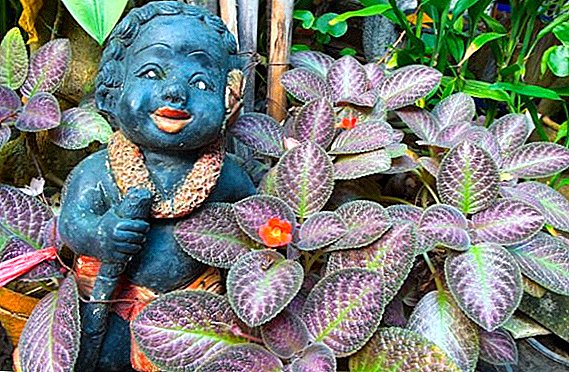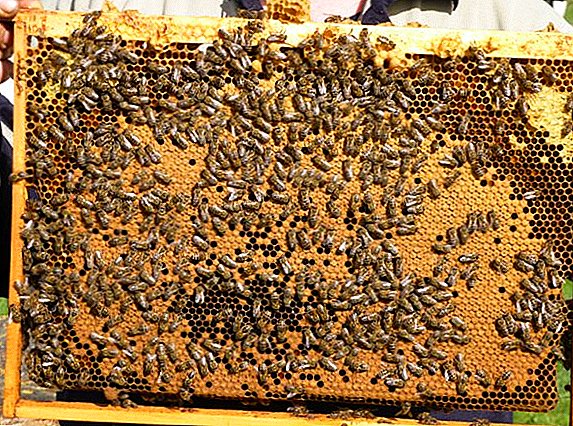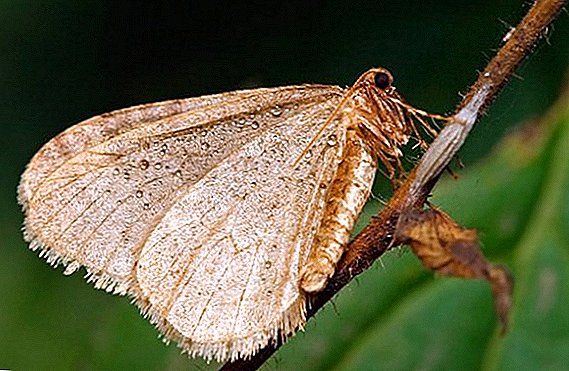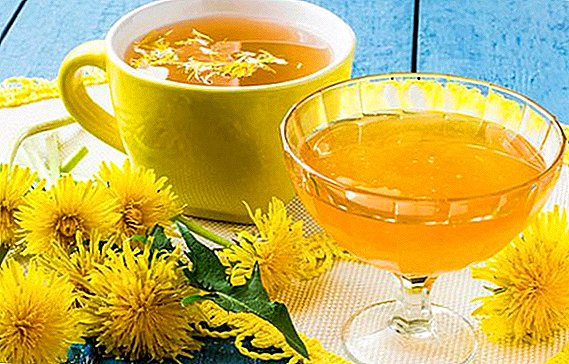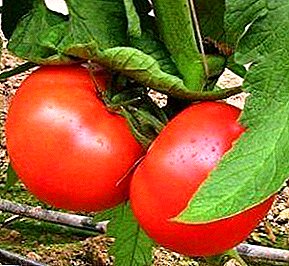 For any gardener, changing the appearance of grown flowers is a serious reason to think about their health.
For any gardener, changing the appearance of grown flowers is a serious reason to think about their health.
In the same way with orchid, sticky droplets appeared on the leaves - we immediately look for the cause.
It should be noted that this phenomenon does not necessarily indicate the need to treat the plant, but this possibility cannot be ruled out.
Are sticky droplets harmful to an orchid?
Sticky drops on leaves or young sprouts of orchids can be a consequence of the natural process of the formation of floral nectar and in this case do not pose any threat to the plant. Nevertheless, this does not mean that there is no cause for concern, because if an orchid has sticky leaves and drops on them all the time, it's time to find out about the other possible causes of this phenomenon, and I must say a lot of them.

Did you know? There are many types of orchids, and while some of them grow only a few centimeters, others can reach a height of several meters.
Causes of droplets on the flower
Suppose you have already noticed sticky droplets on an orchid, and now it remains only to figure out what to do about it. Based on the reason for their appearance, an appropriate plan of further actions is being developed.
For example, this can be quite natural - the result of the formation of flower nectar (sugars are simply processed inside the plant). In this case, the sticky and sweet droplets lure various insect pollinators to the plant, although the possibility of the appearance of flower pests on the orchid is not excluded. As for the latter, most of them do not have time to cause serious harm, because they immediately stick.
For your own comfort, to make sure that "good" sticky drops appeared on the orchid, carefully inspect the entire plant for leaf cutters or powdery worms.
 Also, the reason for the appearance of droplets can serve as the accumulation of water on the surface of the substrate or in the pan and overflow of the plant, and too bright lighting and low temperature in the room often act as additional factors.
Also, the reason for the appearance of droplets can serve as the accumulation of water on the surface of the substrate or in the pan and overflow of the plant, and too bright lighting and low temperature in the room often act as additional factors.
Therefore, if your orchid has not only sticky drops on the leaves, but entire stains, immediately remove the pot from the window sill, dry the top layer of soil, and then try to ensure good drainage.
Another common cause of the problem of weeping orchid leaves is excessive amount of fertilizerdeposited in the ground. In combination with abundant watering, they form a sticky plaque on the surface of the leaves, which contributes to the development of lesions and the appearance of spots. In some cases, in order to solve the problem, it is necessary to completely replace the substrate, because this is the only way to prevent rotting and death of the peduncle or rosette.
When a plant is infected with a shield, aphid, tick or bite they can be easily seen with the naked eye on the surface of the droplets. In the presence of pests, inspecting the plant and the droplets on the sheet, you can see a lot of small dots in them - insects are in droplets and sit there, because they can not get out of the sticky mass. They are also easy to see on the surface of the sheet plate, where there is no liquid.
If your orchid is struck by powdery mildewthen the disease will begin to manifest itself with abundant drops on the leaves, after which it usually passes into the stage of the formation of white bloom with gray patches on the entire surface of the plant.
 Indoor flowers are very capricious plants, so if you notice sticky drops on your orchid leaves, you should think about what you will do right away.
Indoor flowers are very capricious plants, so if you notice sticky drops on your orchid leaves, you should think about what you will do right away.
First of all, review the mode of care, check the temperature readings and humidity in the room with flowers.
If you do nothing in time, it can lead to the death of the orchid, the death of its peduncles and aerial roots.
Did you know? If a sticky bloom appeared on the orchids, and droplets of unknown origin appeared on the leaves, this may be due to the attraction of insects that are beneficial to the plant, which frighten off and destroy pests.
Sticky drops on orchid leaves, how to fix the problem
Now you know why the orchid is crying, but you still need to understand how to correct the problem. Some recommendations are already given above, but now let's discuss this issue in detail. Of course, to begin with, you will have to carefully inspect the plant, check the soil for the presence or absence of overflow, and if necessary, remove the container with the orchid away from bright sunlight.
In the case when you have provided the plant the right care, but the problem does not disappear, a sticky coating on the orchid leaves - a consequence of illness, infection of a flower by indoor pests. Now you have to purchase special insecticides and treat the orchid by eliminating the scythe and the tick.

Important! You should turn to chemical assistance only after you have already tried all other ways to eliminate orchid disease, which manifests itself in sticky leaves: reduced watering in the cold season, moistened the room by spraying the air around the pot, and wiped the leaves with soapy water at room temperature. In most cases, holding such events really helps to cope with the problem.
Nevertheless, the following actions are very effective in treating orchids:
- Replacing watering by soaking flowers in a basin twice a month (in a container with warm and clear water, dilute several tablets from a fungal infection, after which the orchid (together with the pot) is dipped into the solution to the level of the stem, leaving so for 20 minutes) ;
- reducing the number of watering plants in winter, especially if the orchid has already become sticky leaves from below or above (with high humidity plant infections and parasites, which manifest themselves as sticky spots, will develop more quickly);
- spraying the orchid with warm and clear water, to which you should first add a few drops of a special antifungal drug;
- manual collection of insect pests during their mass colonization on the plant;

Important! Always consider the cause of the problem. For example, the appearance of powdery mildew is often triggered by the insufficient illumination of the room, and if a plant is damaged by a shield, soap treatment is necessary. You can also resort to the use of chemistry against the specified parasite.
Preventive action
Even knowing why orchids on the leaves appear sticky drops, and making sure their relative safety, you should try to protect the plant as much as possible from the development of more serious diseases. Of course, the first and most important preventive measure will be compliance with the requirements of the orchid cultivation agrotechnology. This concept includes the regularity and dosing of watering, fertilizing, compliance with the requirements for light, temperature and humidity in the room with an orchid.
It is also useful to regularly inspect the plant and when the first sticky drops are found on the orchid, you should immediately take appropriate measures, because now you know for sure that this is not always a harmless phenomenon. As soon as similar signs were found on one plant, in order to avoid contamination of other flowers, it is better to isolate it immediately and begin to search for the causes and subsequent treatment.
In addition, for prophylactic purposes can be used drugs such as "Aktellik" and "Aktara", which in the appropriate dosage will contribute to strengthening the immunity of orchids.


